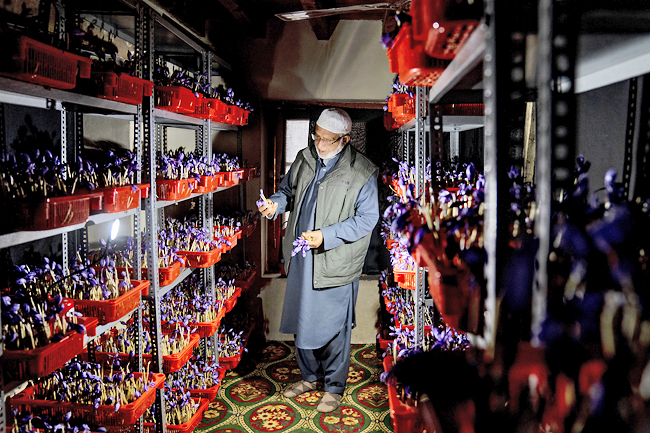AP – As climate change impacts the production of prized saffron in Kashmir, scientists are shifting to a largely new technique for growing one of the world’s most expensive spices in the Himalayan region: indoor cultivation.
Results in laboratory settings have been promising and the method has been shared with over a dozen traditional growers.
Agriculture scientist Nazir Ahmed Ganai said indoor cultivation is helping boost saffron production, which has been adversely hit by environmental changes in recent years.
“If climate is challenging us, we are trying to see how we can adapt ourselves. Going indoors means that we are doing vertical farming,” said Ganai, who is also the vice chancellor of the region’s main agriculture university.
Kashmir’s economy is mainly agrarian and the rising impact of climate change, warming temperatures and erratic rainfall patterns has increased worries among farmers who complain about growing less produce.

The changes have also impacted the region’s thousands of glaciers, rapidly shrinking them and in turn hampering traditional farming patterns in the ecologically fragile region.
For the last three years, saffron farmer Abdul Majeed Wani has opted for indoor cultivation.
He said his experience has been satisfying and the technique “has benefitted us in a good way”.
“We faced some difficulties initially because of lack of experience, but with time we learned,” Wani said.
A kilogramme of the spice can cost up to USD4,000 – partly because it takes as many as 150,000 flowers to produce that amount.
Across the world, saffron is used in products ranging from food to medicine and cosmetics. Nearly 90 per cent of the world’s saffron is grown in Iran, but experts consider Kashmir’s crop to be superior for its deep intensity of colour and flavour.







